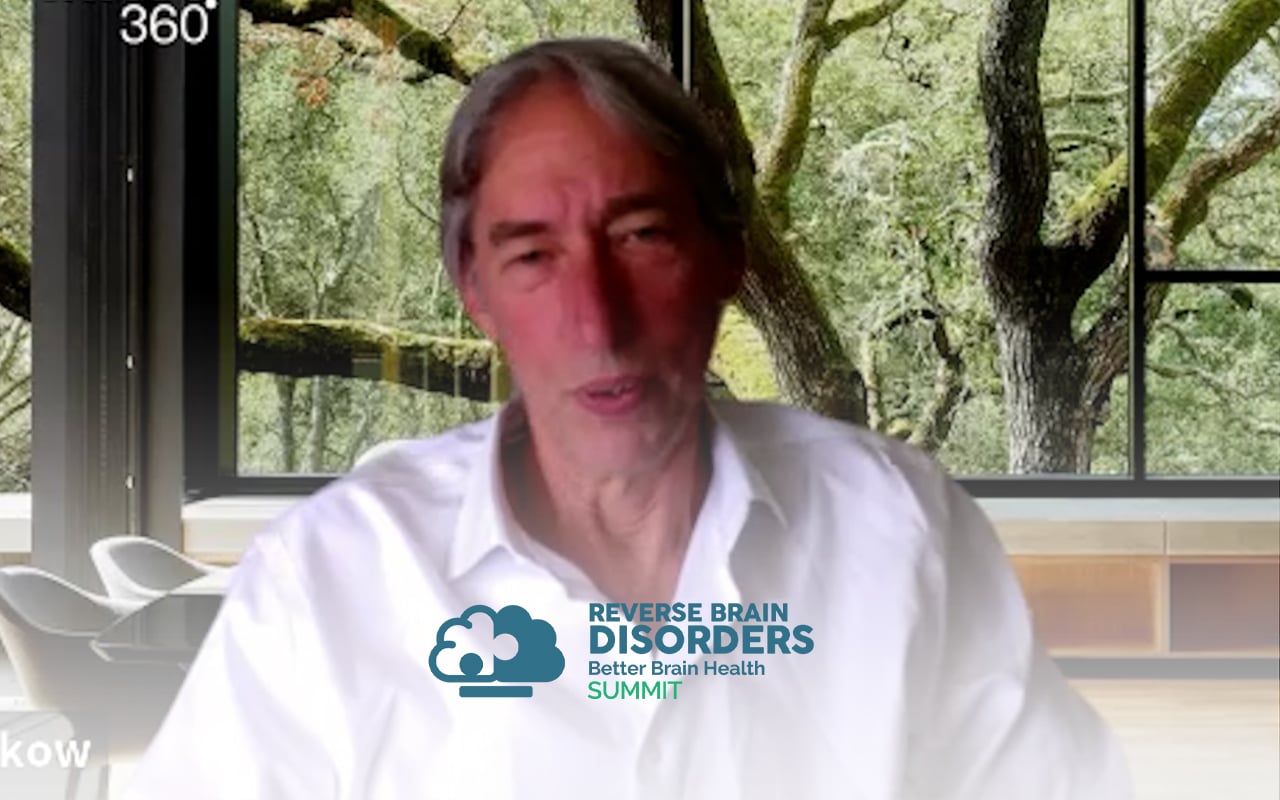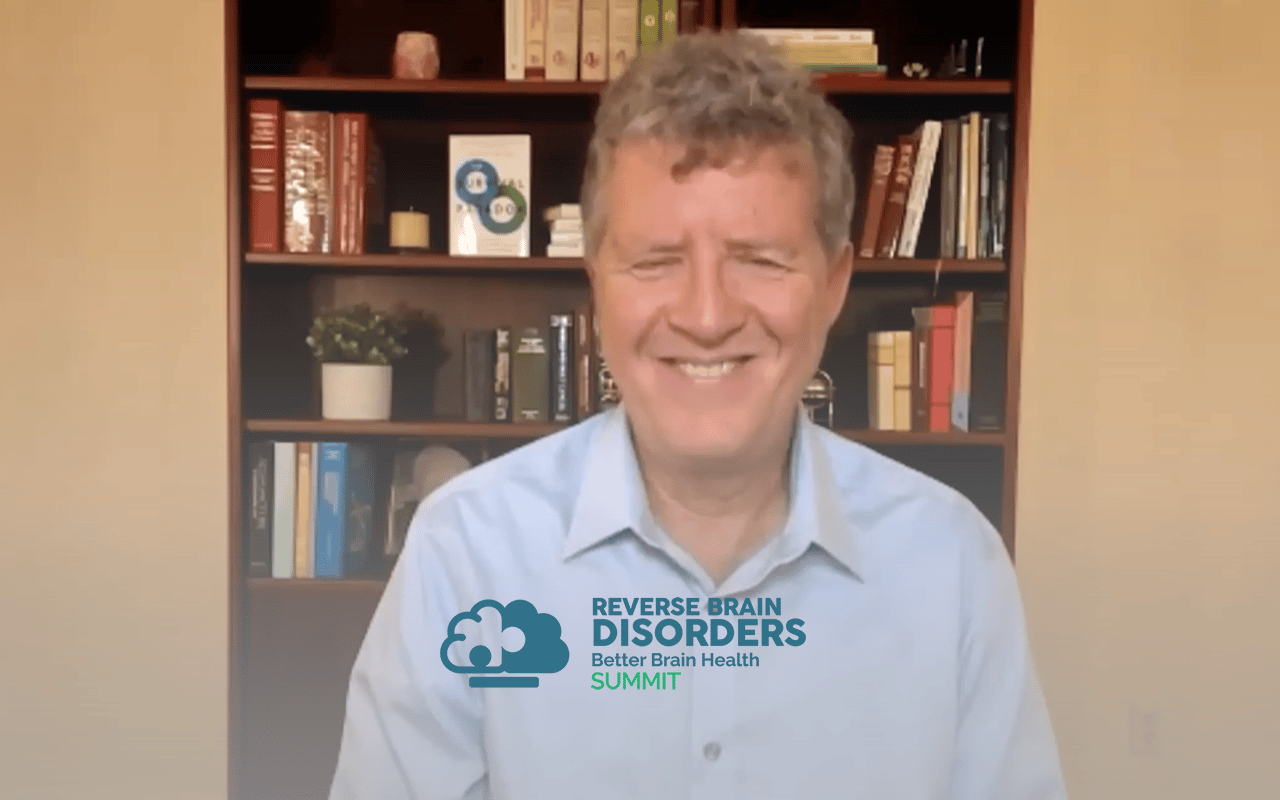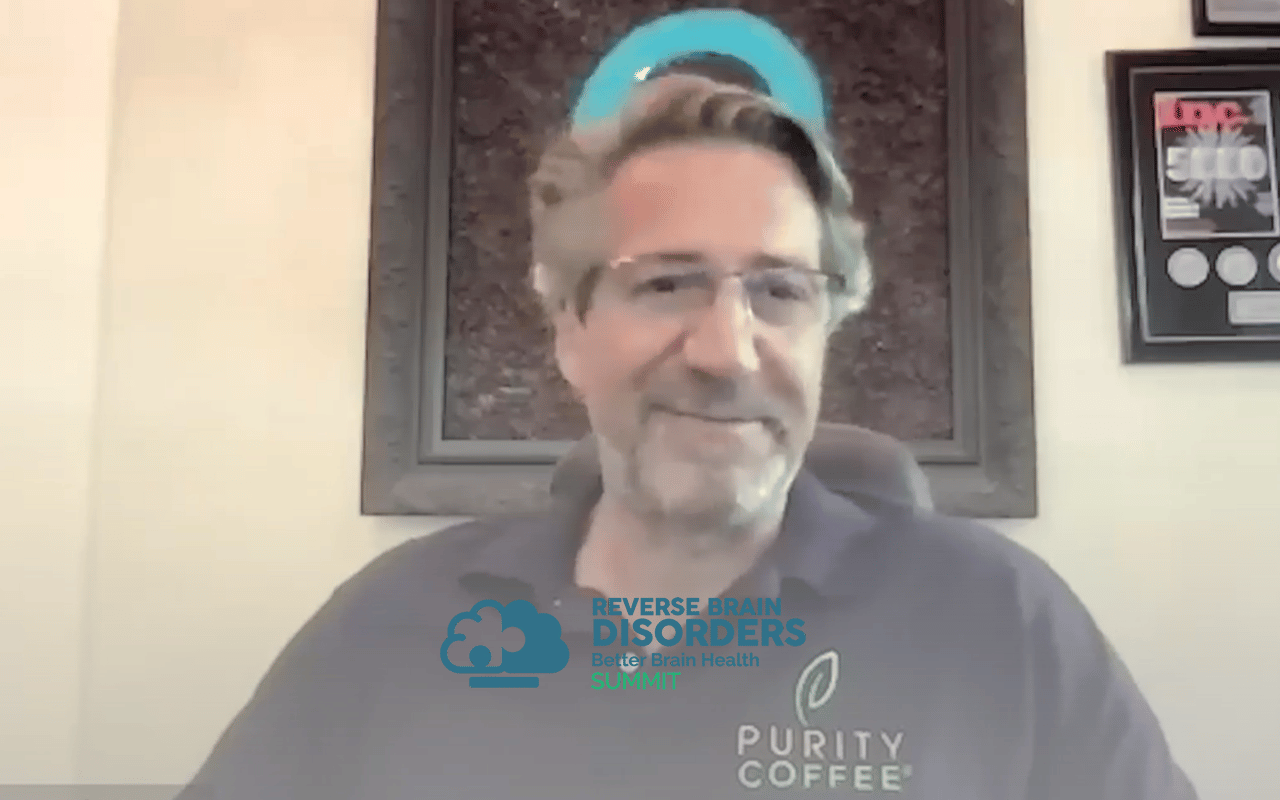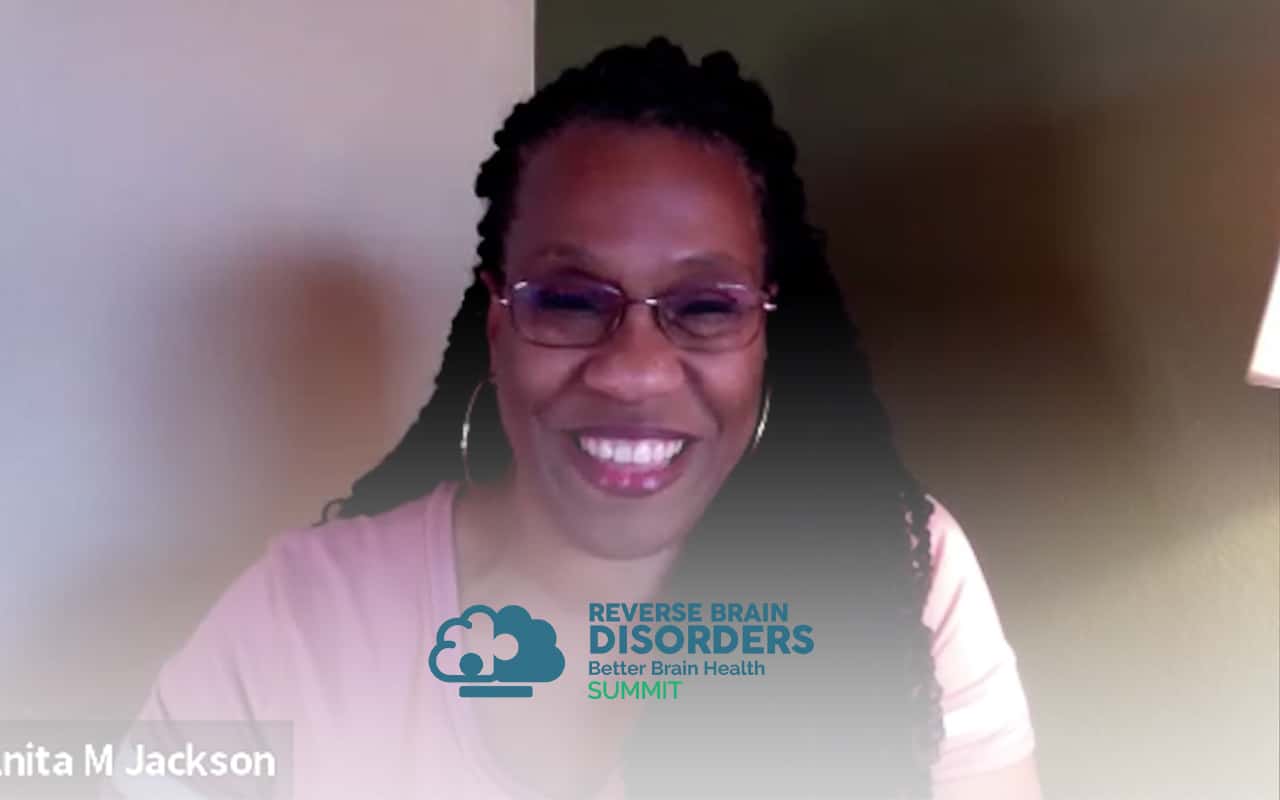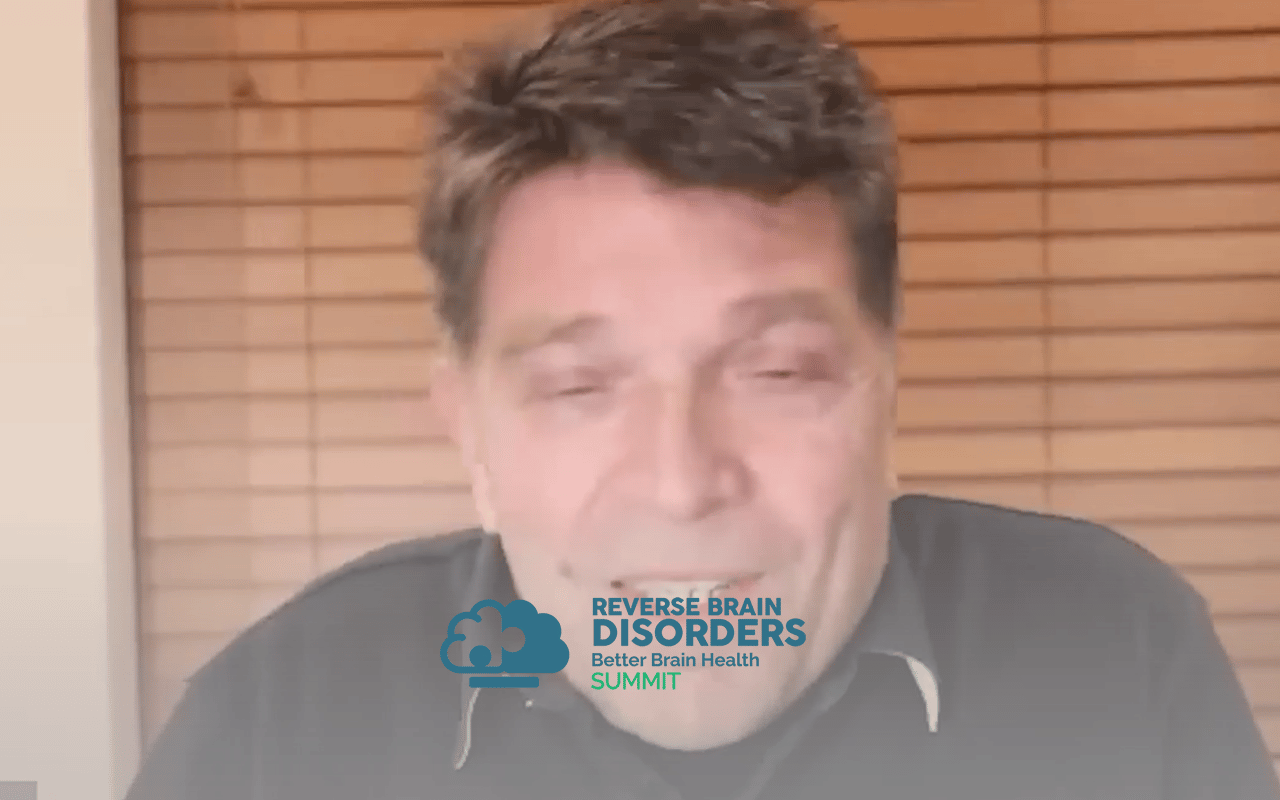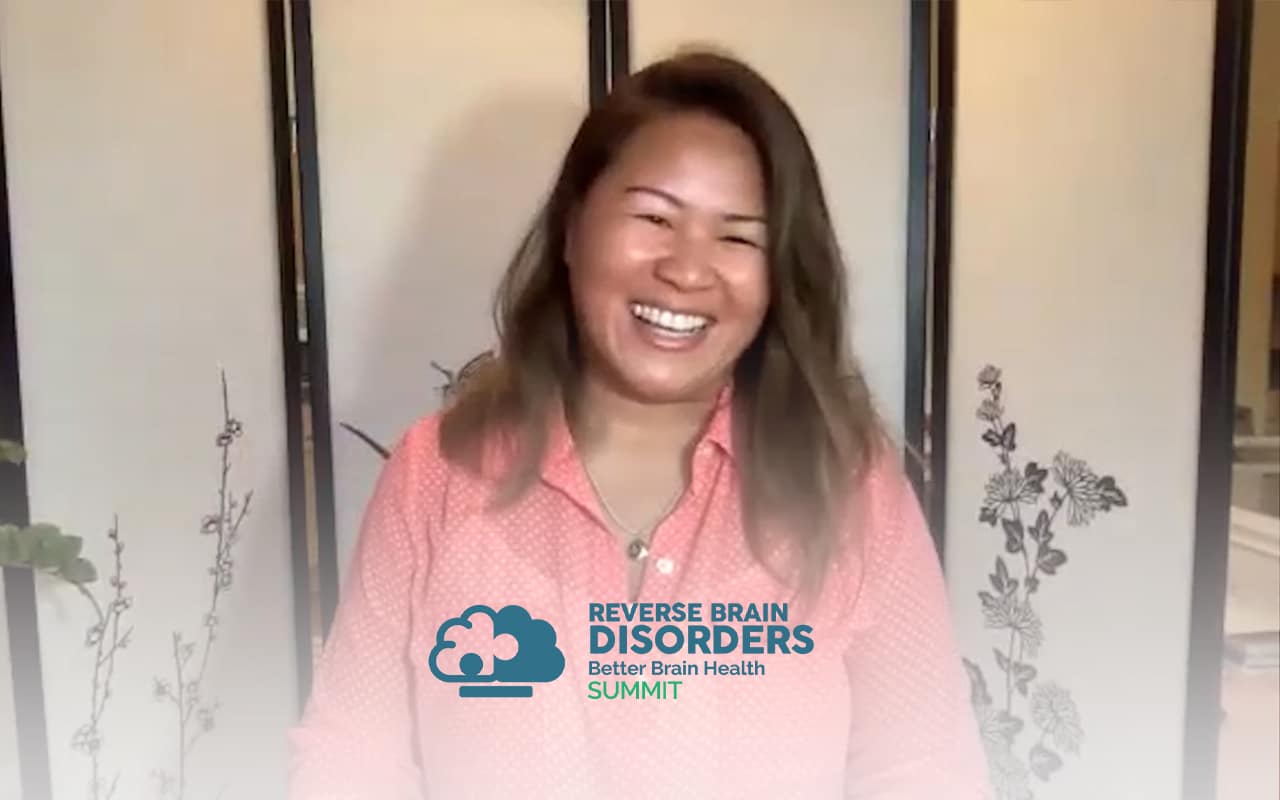Join the discussion below

Dr. Ruan is the Founder and CEO of Texas Center for Lifestyle Medicine. He devotes his career in practicing and building systems that allow for efficient delivery of healthcare. He is a board certified internal medicine physician but also have advised with companies to improve their workflow, company culture, marketing,... Read More
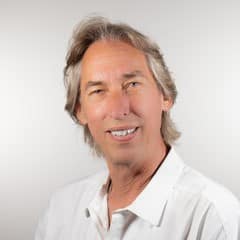
Joe Woskow is a serial entrepreneur, whose current venture is transforming mental and emotional wellbeing to provide affordable access to the masses. Joe's first company, Reality Based Group, disrupted the mystery shopping industry with their Game Film® for Business product, which serves a Best In Class clientele including Ferrari, Mercedes-Benz,... Read More
- What are the current trends in terms of supply and demand when it comes to mental health services?
- How does a virtual reality mental health service impact today’s society?
- How disruptive technology is changing the way we receive information and affecting brain health
Cheng Ruan, MD
You know, the world of virtual reality and augmented reality has really taken the world by storm and I think from a health perspective we’re lagging a little behind but I want to talk to someone who’s right in the weeds when it comes to delivering health and mental health information with the V. R. And A R. So really proud to introduce. Mr. Joe Woskow is a stereo entrepreneur whose current venture is transforming mental emotional well being. And his current company called Thrive 360 is sort of the vision of increasing the efficacy and availability of mental health resources on demand by leveraging technology using augmented reality and virtual reality. So the digital platform uses practicing professionals and techniques and tools and to put into this innovative kind of package from a technology standpoint to be delivered to the world. So proud to introduce Mr. Joe Woskow. Joe, welcome to the summit. I’m so happy you agreed to talk with me. I appreciate you coming on.
Joe Woscow
Thanks man, I appreciate you extending the invitation to me. It’s a privilege.
Cheng Ruan, MD
Absolutely. So let’s dive in. So what are the current trends that you’re seeing in terms of like a disparity and like supply and demand when it comes to like mental health, mental health services right now?
Joe Woscow
That’s a good question. I mean right now, I mean it’s pretty obvious that America and places around the world are what I would call on tilt. I mean today, you know, Americans are experiencing stress at least once a week, high level of stress about 84% of the time, which is, is warming rate. Right now, three out of four roughly employees feel like they’re burning out at their job, one in five adults right now or dealing with and experiencing a real mental illness each year as well. You know, to take that to the, you know, I mean that those statistics right there are pretty alarming and, and that doesn’t really take into account the children that are growing up in this technology driven world and you know what pressing all these buttons is doing everybody, and you would know much better than me, but it’s, it’s a new world.
Cheng Ruan, MD
It is, but not only is there that I think there’s friction points and people want recognizing there’s actually a mental and spiritual and brain health issues and to there’s a fear of reaching out for help as well because like someone in my profession, being a physician for example, right? Once you, once you have a mental health practitioner on board and you’re like, you know, a lot of, a lot of what we do professionally make may be in jeopardy or there’s sort of this thought process, right? And there’s a lot of people who just have this idea that, you know, having these issues is a sign of weakness or anything like that, which is not the case. But there’s there’s a big leap between like recognition of the issues and then Ashley, you know seeking out health and then, I don’t know how does the rest of the country right now, even in Houston, I want to send my patients to a psychologist or licensed social worker for mental health issues. There’s there’s multi week and multi month waiting list now because of what’s going on, right?
Joe Woscow
I mean, right now, what the research is saying and is it for every 100,000 people? 30 licensed therapists out of the 30 licensed therapists, about 46% percent of them are burned out. And if, you know, if you go into the rural areas, it’s much worse than that. I mean, having said that, you know, on average it’s gonna cost somewhere between $65~$250 per appointment and you’re gonna have to go around 15 to 20 sessions to make a measurable impact. And so that journey, that just the journey itself can be filled with stress anxiety for a lot of people, especially when they’ve already got stress and anxiety or something they’re dealing with. And just the idea, I mean, the whole, just the whole time these days right now are so long and when you’re holding, you know, and then you have to go, you know, get in the car and you thought about it the day before. It can, it just adds up. And so.
Cheng Ruan, MD
Oh yeah, and some people are even disabled and they can’t physically go anywhere or rely on public transportation. And that can create a massive barrier as well. Right? And so you know what I’m saying…
Joe Woscow
That right?
Cheng Ruan, MD
Yeah. Yeah. Absolutely. And so we mentioned that because these are barriers. So how did some of these barriers really allow you to shape the platform that you’ve developed and Thrive 360?
Joe Woscow
Well, I mean for me, you know, as someone who’s lived 60 plus years, I’ve seen, you know, just and I haven’t personally experienced. But you know, you see the trends and for a long time I’ve noticed that for example, the B. A. Has always you’ve always heard the reports about the Veterans administration not being able to support the vets, whether it be mental health, getting in for a medical appointment, whatever the case is, it’s been a struggle. And then you think of the general population and for the people that really are just average Joes, so to speak, who you know, who are faced maybe with living paycheck to paycheck, which represents, you know, 200 million people or more in our country right now, so to take off time, you know, and and and commit to you know, what’s ailing you and in an attempt to fix it, get support and then and then hoping that you actually resonate with the person that you’ve identified, that it’s gonna take you on average, 25 to 90 days.
And that’s really if you’ve got some connections, almost or the money, in the, in the case of children, it’s taken up to a year to get to get a specialist that can really speak to them in ways that resonated. So it’s just a big problem. And the idea that I had, you know, 67 years ago was, you know what, you know, it was really what when I took my first virtual reality test drive, and I thought about, You know, one of your other speakers Tony Robbins and what I learned 30 years ago, 25 years ago with regard that some, one of the techniques that he had written a book about neuro linguistic programming and it’s very visual and you get into all your senses. And when I was in this headset, I was thinking, well, one of the issues with that is that 40% of the people if you were to, if I was to say to you, close your eyes, imagine yourself on a beach, you’re overlooking the ocean. You see a rainbow colored sailboat, 40% of the people won’t be able to either see it or that it will be in black and white or still pictures that the sound might be muffled of the wind and the ocean waves.
And so the idea in in neuro linguistic programming, at least in that one modality is to, to get someone relaxed and in a quiet mind so that, so there may be open to seeing and and and reshaping some of their thoughts and and their, it’s called reframing their, the way they see things and hear things for example. And it’s similar and this is not in doctor terms, but to exposure therapy where you know, you might take somebody back to, if it was a relationship, take them back to where, you know, they’re having these problems, the fights whatever kind of anxious they’re dealing with and then have them experience it and and and get them in full state and then have them reframe it maybe before they were in that relationship or having seen themselves, see themselves in a different way going forward. And it brings a lot of relief to a lot of people. And that’s just one idea. But that was the Aha moment for me. And I was wondering if I put someone in a headset and put them on the beach and they see the rainbow colored sailboat and you know, as they’re looking over the ocean with that efficacy increase. And that was really what I set out to prove first of myself and then go forward with some clinical trials and things of that nature to help support it. And it really did. And in some cases help people visualize better, in some cases they don’t need to visualize if you’re in VR, you can see it. So, it just, that was kind of the aha moment that started. But the mission really was to bring technology and an ecosystem of doctors and therapists that specialize in certain areas that a lot of people are suffering in.
And when you’ve got, you know, one therapist, 30 therapists and 15 or whatever for every 100,000 people, it’s, it’s hard to get to see someone, how can we use technology to recreate that in office experience in these different areas where people are suffering or ailing or or they’re looking for coping skills or or management skills of what’s what’s what’s bothering them, we all suffer from stress. We just all have the skill set to manage it. It’s a reality of where we are and who we are. So, the idea was to create an ecosystem of doctors and therapists and then marry that with a marketplace where people could, could go in a trusted fashion and seek out different modalities that doctors and therapists are gonna be prescribing as if you were going to see them in person create the common threads as we produce it that most people are dealing with with whatever is ailing them, some people lose a loved one.
So, you know, I never even really knew prior to really getting into the mission that that there’s there’s therapists and doctors that can help people deal with the trauma of losing a loved one where most people just suffer and have heard the old cliché that time will heal that wound, but there is ways to get through through it quicker, especially if you go and and can identify somebody who really understands how to help you do that and you know, so whether it’s that or stress or anxiety or or having a baby or dealing with your children or relationships, you know, there’s really, I mean the American doctors and therapists are the best in the world. So if we can recreate that in office, experience, enhance it with the technology and then drive it to you know, anybody that’s got a cell phone and make it affordable, then that was our mission and that’s what we’ve done.
Cheng Ruan, MD
Well, it’s amazing. So, I guess the platform will have a recording of the top people in the industry, right? And then that means that the people who are seeking out the help can actually curate their own journey with on demand access right there and then right, And then and when they’re able to have the Andaman access, so that means that there’s convenience, right? It’s cost effective, they can do it from the privacy of their own home or wherever they are, right? And then and also you can start like kind of shopping around and see who you respond to as well, right? So most people don’t get the opportunity to do that within the real life, but from a PR platform and I think it’s a big game changer when we think about it. So I guess what you’re trying to do is you’re not trying to replace like the therapist, the social workers or the psychologist, right? You’re trying to bridge that gap so people can have that step in and of course they should, they choose to go ahead with the therapist or whatever, or maybe be on a giant waiting list. Does at least some progress can be made in the beginning, correct?
Joe Woscow
Yes, I mean, you mentioned stigma earlier. Yeah, so right now, six out of 10 people don’t go to seek help because of stigma, which is really the shame and embarrassment or whatever they’re dealing with. It could be something as simple as I told my life and my kids, I was putting smoking and I find myself out, you know, in the driveway sneaking a cigarette and it’s just the shame of it all. In many cases it’s much deeper issues for some people with regard to relationship issues or stress that’s risen to a level of anxiety and that can be a very wicked place to have to find yourself until you’ve been there. It is, it’s unbelievable really. And so the idea really was to, you know, create these recreate the in office experience, not to replace anybody. The idea is really to take the stigma and and start to de-stigmatize it because it whether people go take the traditional journey of seeing somebody and getting support that way, that’s generally going to get them a good result for the people that may have more restrictions.
What we did was we studied and spent a lot of time on the research of the six out of 10 people who never even go, it’s this untapped market that you don’t hear about. So and when we studied that market, you know, obviously time and money, everybody can relate to that, but the shame and embarrassment. And there’s a lot more that goes into the shame and embarrassment with regard to really getting into what that looks like it sounds like, but the bottom line is we engineered a platform this anonymous confidential, unlike a lot of The AP programs at work. They’re designed with a finite algorithm of people that are gonna be using it. And so engagement levels are generally south of three or 4%, because they don’t they’ve got trust issues. I mean, they’ve got trust issues, just going to see a therapist or a doctor, they don’t want to answer a litany of questions, they don’t want to barely so to someone that they don’t know they’re not comfortable with.
So that when you really get into the research, there’s a lot of issues that are stopping people from even getting help, they can benefit them. So we engineered our platform around the barriers really for the six out of 10 who are absolutely close to suggestion. And then just offered them a different user journey versus a traditional one. But having said that if they resonate with our therapists and doctors or anybody else, we would encourage them to take that path because like I said earlier, we got the best doctors in America, So why wouldn’t we do our best to share that technology and their expertise?
Cheng Ruan, MD
All right. And so this having that sort of platform where there’s well I can go on there anonymously and access that. There doesn’t necessarily have to be a stigma there. And even though there is, it doesn’t matter because I’m going in there into a space, I’m kind of exploring it. So, I think that’s I think what you’re doing is absolutely fabulous. And so, you know, what are there, is there anyone else trying to accomplish what you’ve accomplished and other research being done in VR and and other emerging technologies right now.
Joe Woscow
I mean, there’s a lot of great research being done all over the world and we are especially, I mean there’s a lot of research with regard to suicide prevention, PTSD, exposure therapy all around the world along with within our country robotics and things of that nature. And you know, there’s a lot of good digital self care accidents have exploded. You know, especially since the pandemic there’s nobody really doing what we’re doing, but we’re doing a lot of what they’re doing from different quadrants. And most of them, so I’m are you know, there’s a lot of medical applications in VR but VR unless you’re in a gaming environment still you know, the adoption is growing and and meta just came out with their new headset two days ago and it’s it’s finally getting there to where you’ve got something sleek, light, much lighter weight than their previous one, which is 40% lighter. You know, eventually in the not too distant future, it’s going to be like putting on a pair of sunglasses and then it’s very magical technology when you can get in it, it’s not as funky as it is today.
Cheng Ruan, MD
You know, with so much technology that depleting people’s mental health, I’m glad we have something that’s going to be helping. I think that war is very lopsided like I said earlier, but I think what you develop is wonderful.
Joe Woscow
And so think about the children and the young people that are in the gaming environment isolated all day long.
Cheng Ruan, MD
You read my mind talking about. So what I was talking about is I have young children myself and sort of this immersive environment right now through the environments like Minecraft and roadblocks and stuff like that, right? Is that there’s a lot of the engineering behind the game is to keep them in, keep them sort of engaged in the actual game process. But from a brain perspective it’s actually creating a lot of sleep disturbances are creating imbalances. It’s creating a lot of this hyper dopamine hypervigilant state. It’s fueling the A. D. D. Right? And so that technology right now has been creating a lot of detriment in children but in adults is also worsening circadian dysfunction. Brain fog, memory loss, fatigue, mood disorders, mood swings and stuff like that. And aggressiveness, emotionality, you name it. And in fact, you know, we do brain maps at my facility here at Texas Central lifestyle medicine. I can actually see someone’s brain being hyper triggered chronically over time. And sometimes I’m like what are you feeling?
Well I’m a programmer. I’ll say okay let’s talk about the stimulation of that light over time in your eyes which could be have a detrimental effect. But let’s talk about also like creating the peacefulness right? And mindfulness that’s within you. creating that sense of balance, and this is where, like coaching this is where my body medicine, this is where psychology really can, can come in and create that balance. But I think that from a from a VR standpoint, the easier the easier we can get people to enter this platform and say, hey, you know what, here’s something that you might want to consider, right, and not necessarily push them all the way into, like, a psychiatrist’s office or or or counselor’s office and stuff like that. I think that’s huge, especially in the pandemic era. A lot of now, a lot of people are working from home, right? And so we’re in this new culture and environment where there’s where people don’t necessarily want to leave unless they really have to as well, almost becomes an annoyance, you know, at this point.
Joe Woscow
Let me ask you this, have you seen just basic social skills and anxiety from people that have been isolated now, having to re enter the workplace, because we heard a lot of stories about it’s, you know, a lot of people don’t want to go back there socially, not there, they’re experiencing a lot of anxiety just in the thought of having to, you know, get out in public nowadays, and and socialize.
Cheng Ruan, MD
I think there’s two ways to look at that one, Yes, people are isolated and they don’t necessarily want to go back and two people start realizing that the workplace is triggering as well, right? And that they may feel that higher sense of safety and comfort when they’re at home. And then, well maybe there’s a third aspect is that there’s more jobs that are available to work virtually from home because of all the systems that we built in the last two years to do something, including my own company. Right? And so we’re, well, here’s the thing, there’s nothing wrong with working from home, but the more someone’s isolated, the more that a lot of the mental health issues gonna kind of progress on. And that’s usually because of the isolation.
But also they’re not necessarily getting their steps in right. They’re not getting the vitamin D. That’s necessary to form some exposure. You know, they’re not engaging their muscles, their eating habits actually can change a lot when you’re home availability is very different as well. So it becomes this metabolic nightmare as well, right? But one of the ways that we battle that is to not necessarily hate eat less and move more. No, it’s like create the mindfulness around it, Like create that balance within your life and that. And we really rely on our mental health professionals to do that because that starts first in the behavioral change in process. But that’s the way it kind of kind of located, that makes sense.
Joe Woscow
And you know, to take what you just said and and engineer around what you just said for us that looks like it’s simple is that if people, people are isolated and this is what they go to that we want them to go to this and keep it very seamless that they can get their solutions and their comfort and some hope and and understanding how to manage what’s ailing them right here on the phone and that’s where we start. That’s how we engineered it. That’s what we engineered around was exactly what you’re just talking about and right?
Cheng Ruan, MD
And there’s nothing new about that, right? Because there’s other people’s, you know, for example, headspace. The app headspace. You know that one dessert during the pandemic is because people realizing that there’s a need to create a sort of that mindfulness Esther, right? It’s a meditation app right? There’s there’s insight timer which is another one. So we’re seeing these like self engineered apps. Self help apps if you will, that’s really thriving and doing pretty well. So I think you know the right now what you guys are doing is taking even for much further beyond that and actually include the health care professionals on the platform and that I think that’s absolutely amazing is because there’s not a one size fits all approach to every person’s ailments, right? And so but if it’s all about the hero’s journey, we want to make the people the actual hero and they can start choosing their guides right within the platform and that’s what’s gonna be creating the best outcome for this. So I think it’s absolutely brilliant. So, where do you, where do you like, where do you go from here? What do you think the next five years kind of look like? What do you think it should look like in terms of like VR, mobile health, mobile apps and mental health?
Joe Woscow
Well, I hope, I mean the metaverse and VR is a very exciting space because they’re, you know, I mean when we when I think of what that could do for someone who’s in in narcotics, anonymous or alcoholics anonymous, who may have been live in a city or may live in the in a rural area and maybe the weather is bad, it’s cold and they or their car breaks down, you know, that will provide them an opportunity to go to a virtual meeting. They can continue with anonymity potentially as an avatar or they don’t have to be anonymous. They they have a choice of how to whatever kind of cover they they feel like they need, but at the same time the goal is get to the meeting, you know, get to the meeting, if that’s what you’re suffering from or if that’s the what you’re coping skill is to participate and I’m not suggesting that going in person is not as good or vice versa, I’m just saying it’s just another alternative that for some people who don’t want to get out anymore, it may be easier. At least they get there and, you know, through the magic of technology.
Cheng Ruan, MD
Absolutely. I think it’s, once again, I think it’s a game changer, but also think it’s that, you know, some people who kind of view the metaverse, that’s something that’s like evil or something, review VR that’s something that’s, you know, we shouldn’t go there well, you know, unfortunately, or fortunately that’s where that’s where we’re going and it’s not like you can stop it, right? And so to meet people where they’re at, you’ll need a platform to combat destruction that other platforms can create, especially in like the gaming world and stuff like that, and the social media and stuff like that as well, right? And meeting people where they are, which is, you know, AR, VR or just just on the phone at home, right?
Meeting people where they are, is absolutely needed. In fact, you know, that’s where medicine is going, you know, the practice of medicine hasn’t really changed ever. And technology has changed a lot in the last 70 years, it’s changed a lot of medicine hasn’t necessarily evolved to meet people where they are and medicine really needs to and I think that the delivery of this type of information to technology is absolutely crucial. You know, I think I do see 11 day that, you know, we’re able to kind of all come together and say that, hey, maybe a platform like Thrive 360 was the first to do it, right? And then we can kind of model after this concept and say, hey, this is where the standard of care should be. I think it could be a standard of care in the near future.
Joe Woscow
Well, hopefully it’s built on, I mean, I’m guilty like everyone else of loving my iPhone and loving my watch, but every time the front door opens my watch goes off and I’m I’m being buzzed and I can’t imagine that it’s probably healthy for me, but I want to get rid of my toys. No. So I’m hoping that like you said that, you know, I mean in the sense of the I watch for example, there’s some great technology coming out with health that that that can tie this, you know, if your blood pressure goes up, if your heart’s racing all of a sudden, you know, without even knowing if you’re gonna get a notification and it can really serve you in in just a great way. My own mother has not irregular heartbeat, but what is it called when it just starts beating fast.
Cheng Ruan, MD
Yeah. So, its arrhythmias.
Joe Woscow
Yeah, and but her watch will notify her and she can take action on it. So it is the reality of our world. I don’t think we can change it. So hopefully we can find a way to use that reality to help people support what’s ailing them. But there is some very cool futuristic stuff coming out in the health side of what we’re seeing. But I also understand the people that that considered to be evil because it’s it’s you know, a lot of Children are addicted to it. A lot of adults are too.
Cheng Ruan, MD
Right. But once again, that’s we have to meet society where it’s going right. It’s not necessarily, you know completely get rid of it. And these are lifestyle choices that we can certainly make. But you know, fighting the good fight, you know, takes us to to use technology to meet the people, you know, where they’re at. So how do people find Thrive 360, what is the website?
Joe Woscow
It’s www.thrive360.com.
Cheng Ruan, MD
Excellent. 360 in numerical. 360. Right.
Joe Woscow
Yeah.
Cheng Ruan, MD
Okay. Alright. Wonderful. And so thanks for thanks for being on. It’s been a wonderful conversation. I’m certainly really stoked and really happy to see some people doing the things that you’re doing in creating technology for good. So I’m so happy to have you on.
Joe Woscow
Well I appreciate you change and for extending me an invitation and I appreciate the kind of work that you’re doing because you have such a good reputation and, and you see it from both sides. You understand the clinical side. And yes, it’s a pleasure to have been with, you know, a privilege.
Cheng Ruan, MD
Thank you so much, appreciate everyone for listening. Have a good day.
Downloads

